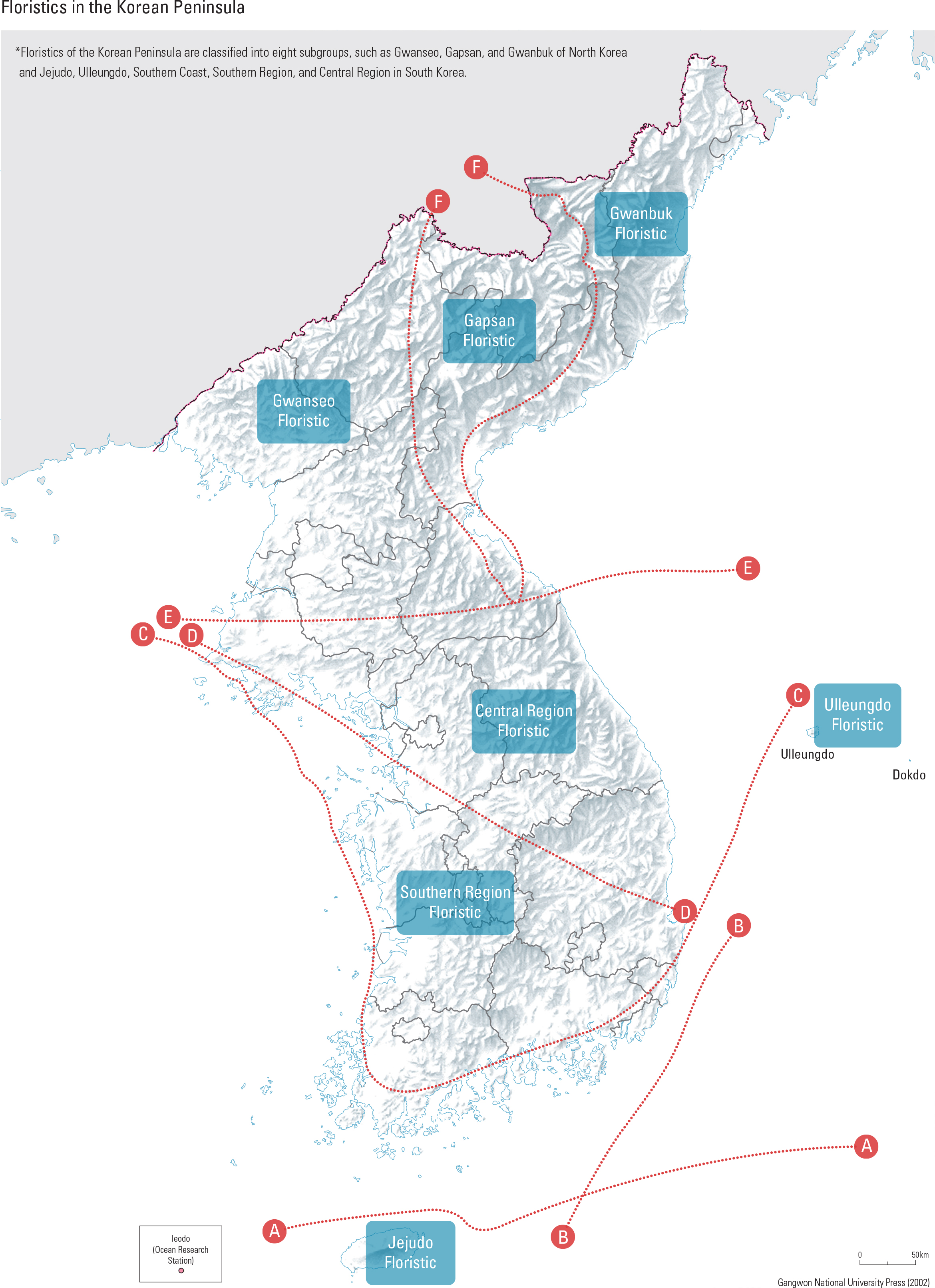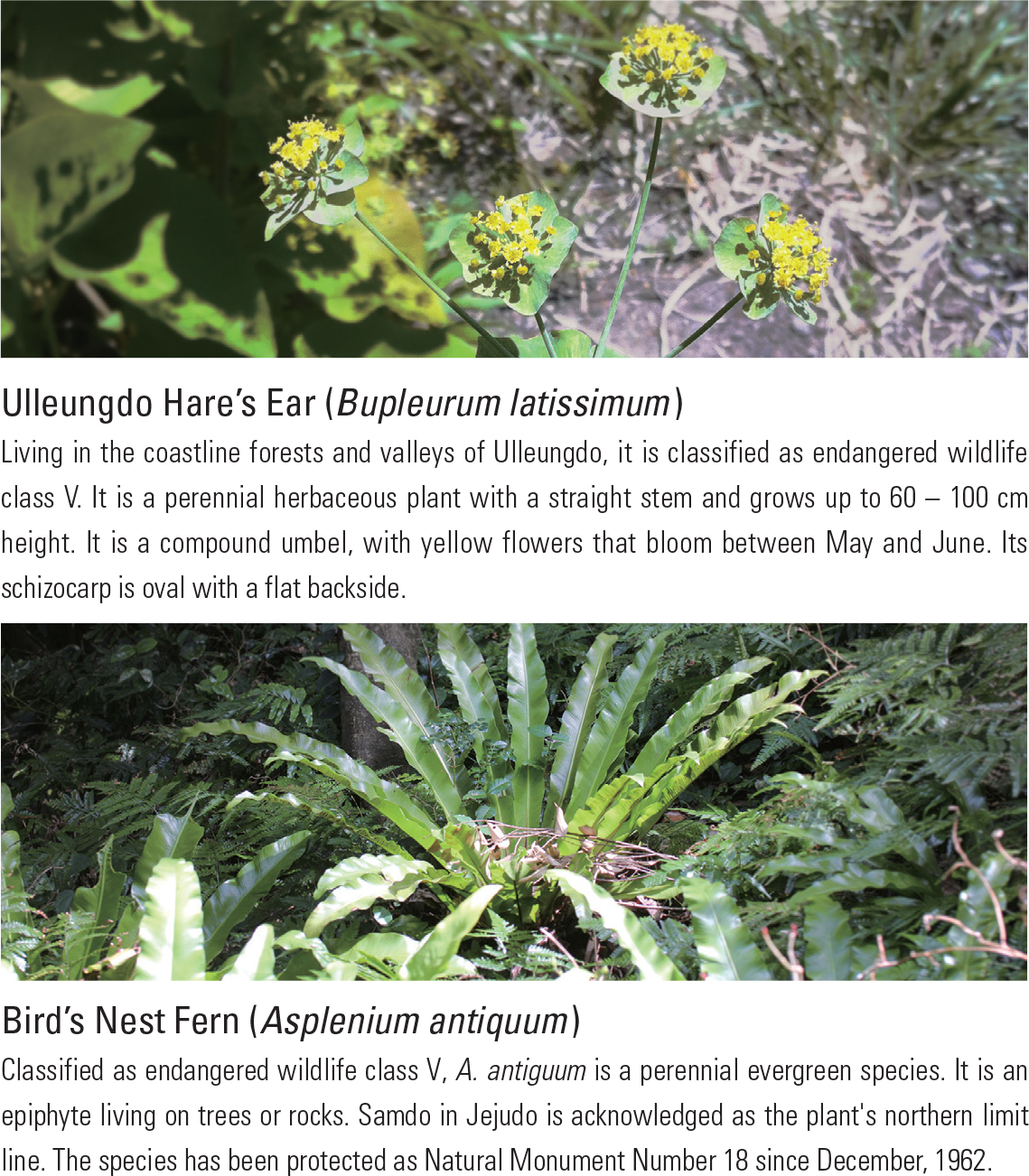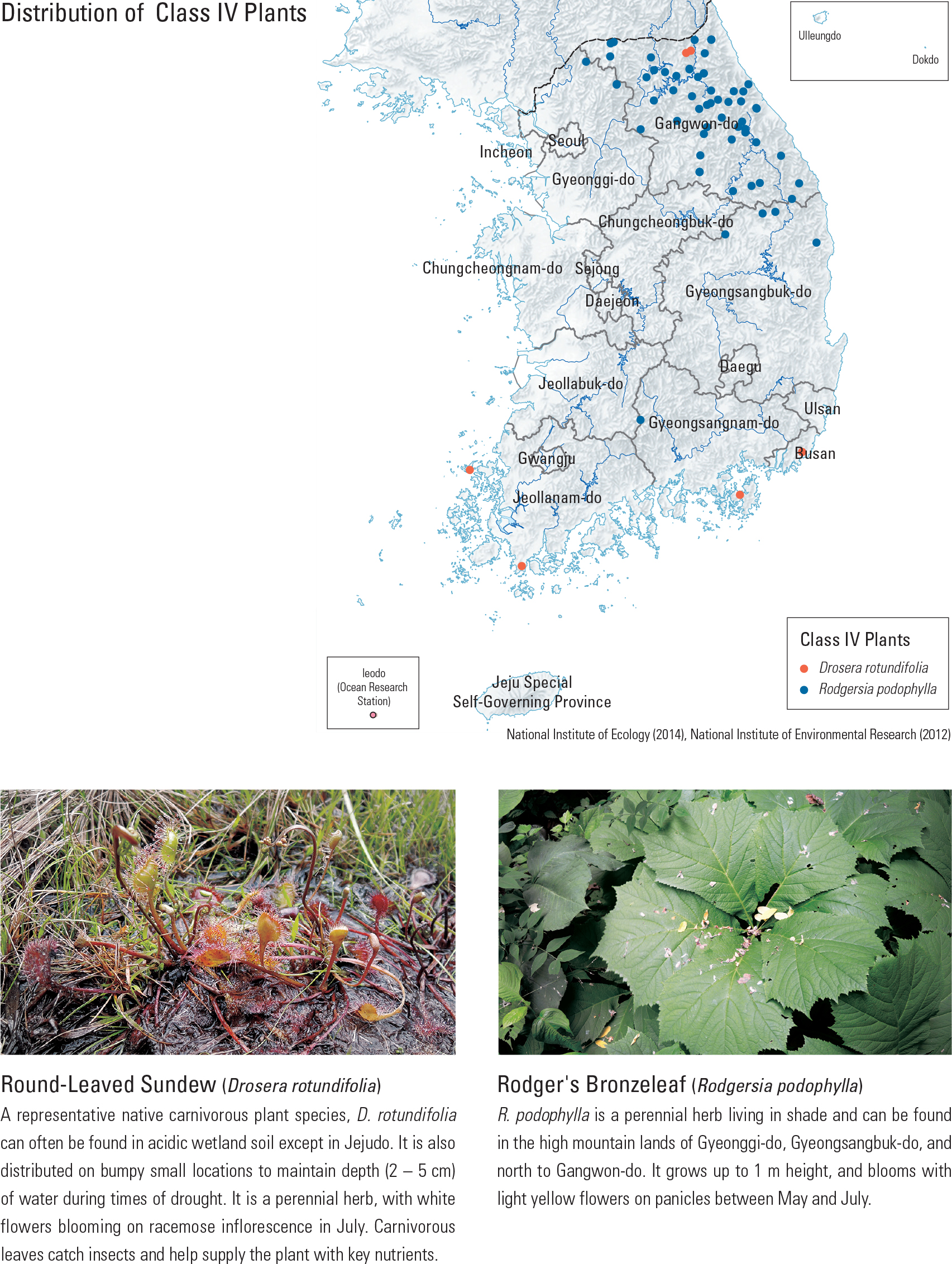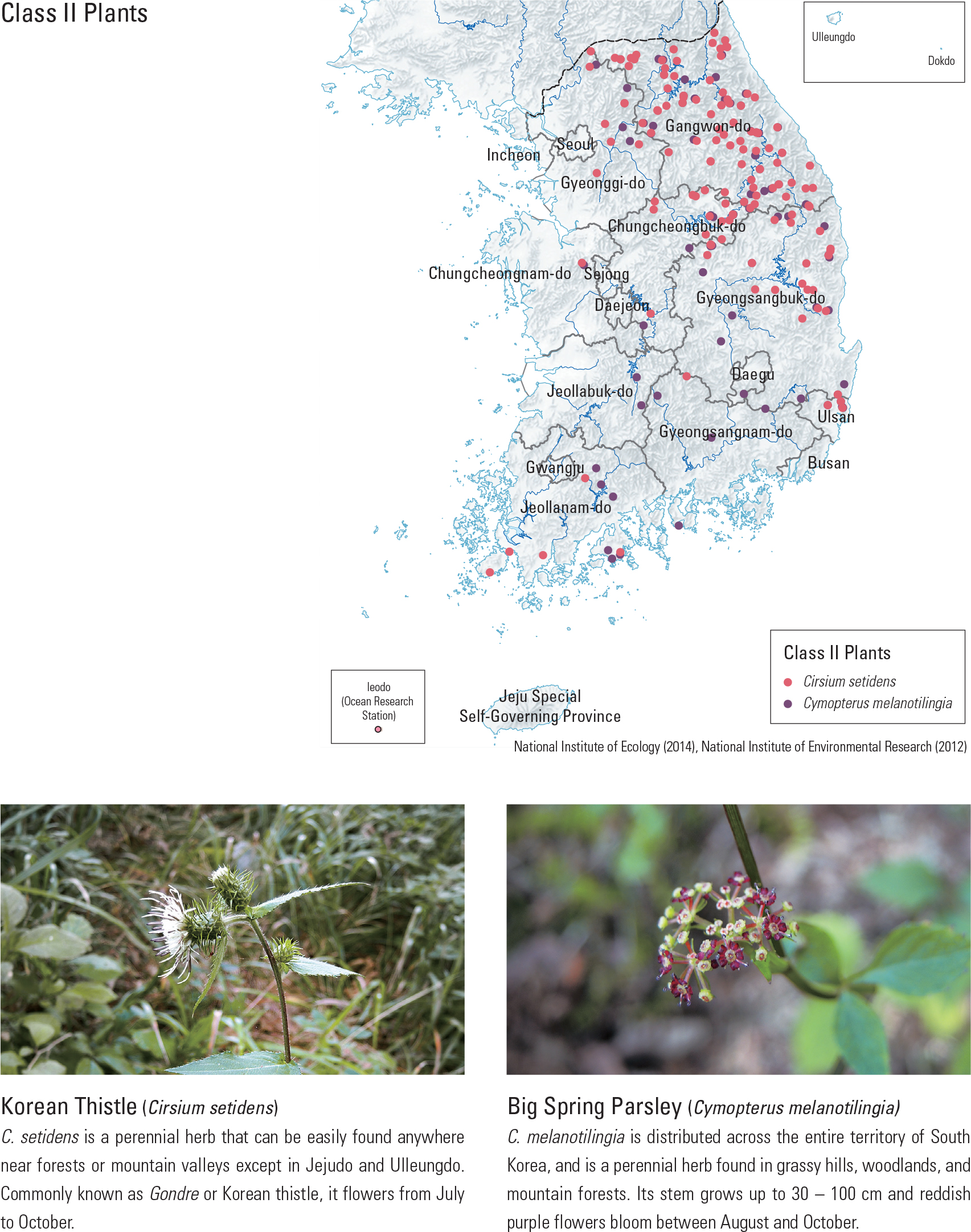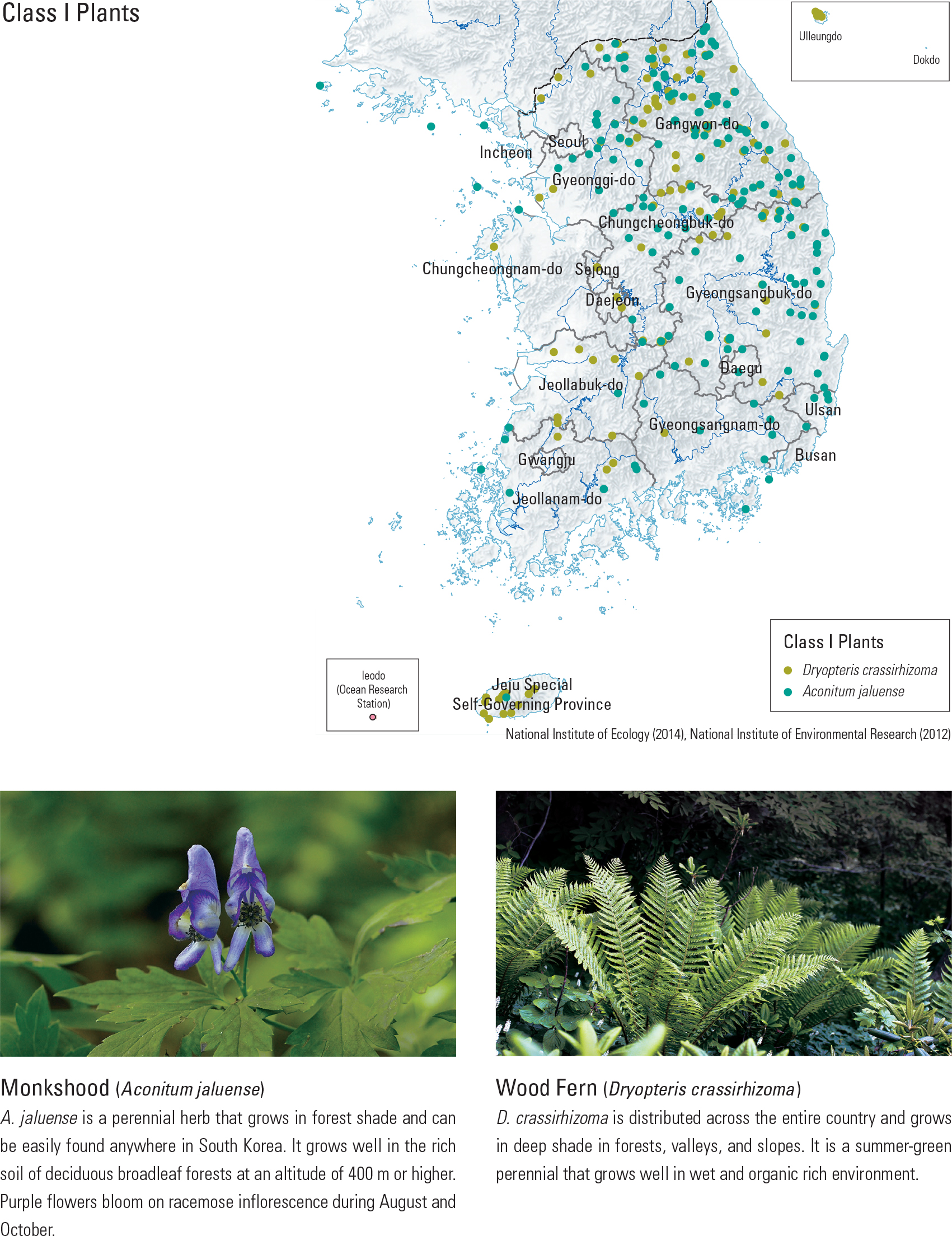English II
Plant distribution is determined by numerous environmental factors such as topography and climate, and the dispersal ability of each plant species. By regions, phytogeographical categories are decided upon plant’s original characteristics. Such regions of plant distribution are called floristics. Floristics of the Korean Peninsula are classified into eight subgroups. The eight subgroups include Gwanseo, Gapsan and Gwanbuk in North Korea and Jejudo, Ulleungdo, southern coast, south- ern region, and central region in South Korea. The Korean Peninsula is inhabited by 4,338 taxa of plant species. Five South Korean floristic regions contain about 3,300 naturally growing taxa. About one thousand taxa, including East Asian edelweiss (Leon- topodium japonicum), Manchurian poplar (Populus maximowiczii), big- bract thorowax (Bupleurum euphorbioides), and Siberian lily (Lilium dauricum), are estimated to inhabit the central region; 1,300 taxa, includ- ing Korean stewartia (Stewartia pseudocamellia), Korean winter hazel (Corylopsis coreana), and Korean forest poppy (Coreanomecon hylome- conoides), inhabit the southern region; 2,000 taxa, including camphor (Cinnamomum camphora), wild dampalsu (Elaeocarpus sylvestris var. ellipticus), waxberry (Myrica rubra), and other southern plant species, inhabit the Jejudo region; and 700 taxa, including pointed-petal trillium (Trillium tschonoskii), false lily of the valley (Maianthemum dilatatum), and giant knotweed (Fallopia sachalinensis), inhabit Ulleungdo. Also, around 3,000 taxa, including dark-bark spruce (Picea jezoensis), Korean viburnum (Viburnum koreanum), Korean twisted-stalk (Streptopus kore- anus), and alpine clubmoss (Lycopodium alpinum), are found in Gwan- buk, Gapsan, and Gwanseo of North Korea.
page_2 |
